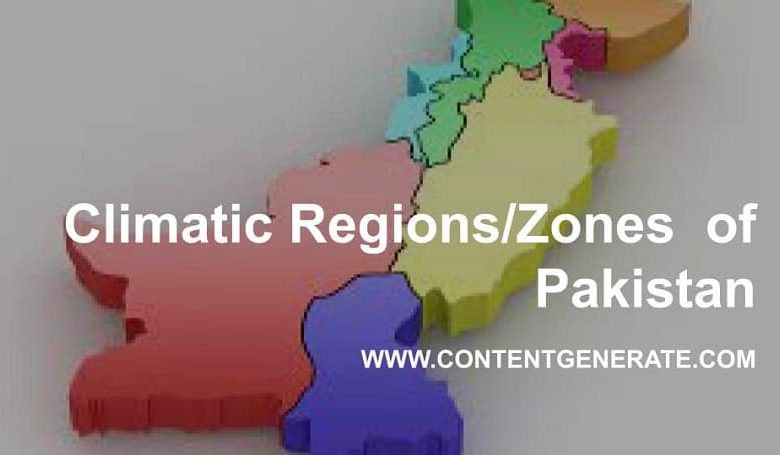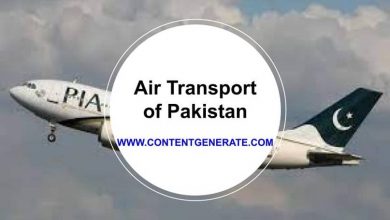
This article describes the main climatic regions of Pakistan.
Contents
What does the term climatic region/zone refer to?
Climatologists classify the climate of a country into categories. More or less similar climates of different places within a country are placed under a common category. For example, in Pakistan climate of northern, north-western, and western mountainous areas is more or less similar. The climate of these mountainous areas is grouped as highland climate.
Similarly, the climate of the areas located along the coastal strip running from Balochistan’s Makran Coast to Ran of Kutch in the east is more or less similar. Based on this similarity the climate of coastal areas is categorized as coastal/maritime climate.
Climatic regions of Pakistan
The climate of Pakistan is divided into four main climatic regions or zones i.e. Highland Climate, Low land Climate, Desert/Arid Climate, Coastal/Maritime Climate.
1. Highland Climate
In Pakistan, the highland climate refers to the climate of high altitude areas such as the northern, north-western, and western highlands.
The following are the main features of the highland climate of Pakistan:
- long, cold, and snowy winters with freezing temperatures.
- Mild, short, and wet summers in the Northern Mountains. Dry and warm summers in the Western Mountains.
- Altitude-associated rainfall. The rainfall is highest in the northern mountains because of more height.
- The rainfall is relatively less in western mountains as their height is less than that of north-western mountains.
- The temperature conditions of different areas also vary depending upon the altitude. As we move from north to south, the temperature decreases and vice versa.
2. Low land Climate
Low land climate includes the climate of the Indus plain in Punjab and Sindh. The main features of lowland climate are as follows:
- Summers are hot, arid, and sometimes extremes.
- Monsoon rainfall occurs during summers between July and August.
- Winters are mild and cool.
- North and northwest of the Indus plain witness thunderstorms.
- Rainfall is very less and most of the summer days witness high temperatures.
3. Arid Climate
Arid climate refers to the climate of desert areas i.e. Kharan (South-west Balochistan), Cholistan (South-east of Punjab), Thar (South-east of Sindh), Thal (north-east of Punjab) deserts in different parts of Pakistan.
The main features of desert climate are as follows:
- summers are hot and dry days and cool evenings.
- During the day, hot winds called loo in Urdu blow across the plains.
- The Thar desert in the southeast of Sindh receives little rainfall during monsoons.
- The desert areas observe dusty winds that blow continuously from mid-May to mid-September.
- Extreme heat, dryness, and dust storms are some permanent features of desert climate that temporarily lower the temperature.
- Winters are cold, with minimum mean temperatures of about 4 °C in the month of January
- Desert areas in southern Balochistan receive scanty rainfall during winters.
4. Coastal Climate
Coastal climate refers to the climate of the areas that are located along with the coastal strip running from Ran of Kutch at the Pak-India border to Makran Coast at the Pak-Iran border. The coastal strip of Pakistan includes places like the Makran coast, Karachi, Thatta, Indus Delta, Run of Kutch, etc.
Main Features of Coastal Climate of Pakistan
- Sea breezes blow throughout the year.
- Warm winds blow from Thar desert in the east.
- The proximity to the sea causes a high level of humidity that crosses 50% between April and September.
- Rainfall is scanty which occurs only during summer because of monsoon winds in the month of July or August.
- Makran Coast also receives little rainfall due to the western depression winds. Western Depression winds blow from the Mediterranean sea and enter Balochistan from Iran and Afghanistan causing rainfall in places they cross.


